|
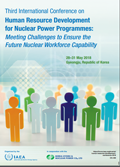
|
 |
|
 |
 |
|
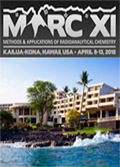
|
 |
|

|
 |
|
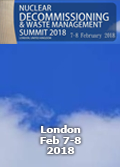
|
 |
| |
 |
| |
| |
|
|
|
|
Si no desea recibir mas este Boletín haga click aqui. |
|
|
|
|
|
|
|
|
|
|
|
|
|
|
|
 |
 |
 |
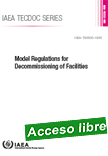 |
Model Regulations for Decommissioning of Facilities
IAEA TECDOC, 2017, 64 p.
The IAEA has systematic programmes to provide Member States with the guidance, services and training necessary for establishing a legal and regulatory framework, including the planning and implementation of decommissioning. The model regulations provided in this publication cover all aspects of the planning, conduct and termination of the decommissioning of facilities and management of the associated waste, in accordance with the relevant requirements of the IAEA safety standards. |
They provide a framework for establishing regulatory requirements and conditions of authorization to be incorporated into individual authorizations for the decommissioning of specific facilities. The model regulations also establish criteria to be used for assessing compliance with regulatory requirements. The publication will be of assistance to Member States in appraising the adequacy of their existing regulations and regulatory guides, and serves as a reference for those Member States developing regulations for the first time.
Extraído de: http://www-pub.iaea.org/books/IAEABooks/12204/Model-Regulations-for-Decommissioning-of-Facilities
|
 |
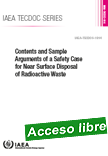 |
Contents and Sample Arguments of a Safety Case for Near Surface Disposal of Radioactive Waste
IAEA TECDOC, 2017, 80 p
This publication arises from the results of two projects to assist Member States in understanding and developing safety cases for near-surface radioactive waste disposal facilities. The objective of the publication is to give detailed information on the contents of safety cases for radioactive waste disposal and the types of arguments that may be included. |
. It is written for technical experts preparing a safety case, and decision makers in the regulatory body and government. The publication outlines the key uses and aspects of the safety case, its evolution in parallel with that of the disposal facility, the key decision steps in the development of the waste disposal facility, the components of the safety case, their place in the Matrix of Arguments for a Safety Case (the MASC matrix), and a detailed description of the development of sample arguments that might be included in a safety case for each of two hypothetical radioactive waste disposal facilities.
Extraído de: http://www-pub.iaea.org/books/IAEABooks/12209/Contents-and-Sample-Arguments-of-a-Safety-Case-for-Near-Surface-Disposal-of-Radioactive-Waste
|
 |
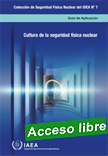 |
Cultura de la Seguridad Física Nuclear
Colección de Seguridad Física Nuclear del OIEA, 2017, 56 p.
En la presente guía se explican los conceptos y elementos básicos de la cultura de la seguridad física nuclear y su relación con disposiciones y políticas relativas a otros aspectos de la seguridad física nuclear. La guía proporciona una visión general de las características de la cultura de la seguridad física nuclear y pone el acento en que esta depende, en última instancia, de personas, a saber, responsables de formular políticas, reguladores, directivos, empleadores individuales y, hasta cierto punto, personas del público.
|
Además, cada persona, individualmente, influye en la seguridad física nuclear; cómo interactúan unas con otras, con el personal directivo y con los sistemas técnicos también tiene consecuencias.
El concepto de cultura de la seguridad física nuclear (y su promoción y mejora) se ha perfeccionado a fin de establecer unas orientaciones internacionales y crear más conciencia entre todos los interesados, incluidos los sectores público y privado.
Esta publicación, que pretende ser una introducción al tema, se dirige a las instituciones interesadas. Las orientaciones que contiene están destinadas a organismos reguladores y otras organizaciones, instituciones y personas que participan en actividades en las que se emplean materiales nucleares u otros materiales radiactivos y que deberían actuar en caso de incidente relacionado con materiales radiactivos o sus instalaciones conexas, incluido el transporte de esos materiales.
Extraído de: http://www-pub.iaea.org/books/IAEABooks/11138/Nuclear-Security-Culture
|
 |
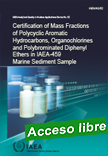 |
The Marine Environmental Studies Laboratory (MESL) of IAEA-EL provides assistance to Member States’ laboratories to enhance the quality of the analytical measurement results, in trace elements and organic contaminants in the marine environmental samples.
|
This is achieved through the production of certified reference materials, organization of interlaboratory comparisons and proficiency tests, and by conducting training courses on the analysis of contaminants in marine samples. This activity is undertaken in the framework of the EL’s subprogramme 2.4.1 “Reference Products for Science and Trade” and the Project 2.4.1.1 “Provision of Reference Products and Assurance of Laboratory Performance”.
Certified Reference Materials (CRMs) are valuable tools for analytical method development and validation to improve the measurements and quality control in analytical laboratories. More specifically, marine matrix CRMs are needed to ensure the reliability of the analytical measurements and ensure the use of high quality data as the basis for decision making in national or regional marine pollution monitoring programmes. Furthermore, since the Stockholm Convention (SC) on persistent organic pollutants (POPs) was adopted 15 years ago, a great number of different analytical methodologies have been extensively developed
and there is great need of CRMs for these contaminants. While there are several CRMs certified for organic contaminants, there is still a noticeable lack of matrix CRMs, in particular for POPs in marine sediments, where the concentrations levels are in the low range of µg kg-1. To meet this need, MESL has developed a sediment CRM for the determination of a great number of organic analytes listed as Persistent Organic Pollutants (POPs) by the Stockholm Convention as well as other POPs listed as priority substances (PSs), such as polycyclic aromatic hydrocarbons included in many environment monitoring programmes.
This report describes and provides information on the sample preparation methodology followed and on the assignment of property values with their associated uncertainties for a number of persistent organic contaminants in a marine sediment sample. Certification of the mass fractions was made for major POPs, including polycyclic aromatic hydrocarbons (PAHs), polychlorinated biphenyls (PCBs), chlorinated pesticides and polybrominated diphenyl ethers (PBDEs). Results on aliphatic hydrocarbons and other minor POPs are also provided as information values.
The CRM IAEA-459 was produced to satisfy the needs of laboratories to strengthen data quality assurance in the analysis of POPs and other priority substances in marine samples.
Extraído de: http://www-pub.iaea.org/books/IAEABooks/12261/Certification-of-Mass-Fractions-of-Polycyclic-Aromatic-Hydrocarbons-Organochlorines-and-Polybrominated-Diphenyl-Ethers-in-IAEA-459-Marine-S
|
 |
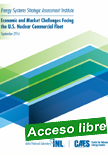 |
Economic and Market Challenges Facing the U.S. Nuclear Commercial Fleet
Office of Nuclear Energy - U.S. Department of Energy, September 2016, 102 p.
This report identifies underlying economic and electricity market factors that have led to early retirements of U.S. operating nuclear power plants, assesses the Gap between operating revenues and operating costs for selected nuclear power plants, and discusses a range of actions that might be taken to stop early retirement of operating nuclear power plants. |
The Kewaunee and Vermont Yankee nuclear power plants were retired early for economic and financial reasons. The owners of the Crystal River and San Onofre units chose to retire those units early, rather than invest in needed plant repairs. Early retirement has been announced or proposed for Clinton and Quad Cities in Illinois, FitzPatrick and Ginna in New York, and Fort Calhoun in Nebraska. Other nuclear power plants, including Palisades, Davis-Besse, Prairie Island, and Three Mile Island Unit 1, have been identified as facing financial stress that might lead to early retirement. The early retirement of operating nuclear power plants will mean the loss of a large amount of zero-emission electricity, inconsistent with the goal of reducing carbon emissions in the electricity sector.
This report provides a high-level view of the major factors driving early retirement: The U.S. market and private ownership approach to the electricity sector; Low electricity market prices resulting from low natural gas prices, low demand growth, increased penetration of renewable generation, and negative electricity market prices; and No compensation to nuclear power plants for public benefits including zero-emission electricity.
The combination of these factors has led to market failure for nuclear power, given the U.S. market approach to electricity combined with sustained low electricity market prices. Continuing financial losses for operating nuclear power plants may increasingly be resolved by early retirement, with this early retirement resulting in the loss of net public benefits.
The Gap between estimated annual operating plant revenues and plant operating costs for a selected set of nuclear power plants was calculated. The analysis of plant revenues included both energy and capacity payments as discussed in detail in the report. The additional revenue generated for the Zero Emissions Credit (ZEC) is also considered in the Gap analysis for operating plants in New York that will receive ZEC payments. The Gap assessment includes three levels of operating costs: a base level for all units of $300,000/MW/year plus a high and low operating cost estimate for each of three nuclear power plant configuration categories (i.e., small single unit, large single unit, and multiple unit site).
Extraído de: https://gain.inl.gov/Shared%20Documents/Economics-...-Fleet.pdf
|
 |
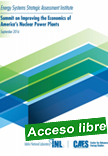
|
Summit on Improving the Economics of America’s Nuclear Power Plants
Office of Nuclear Energy - U.S. Department of Energy, September 2016, 32 p.
On May 19, 2016, Secretary of Energy Ernest Moniz convened a meeting of experts and stakeholders to discuss the economic challenges facing a number of nuclear power plants (NPPs) and the unintended consequences that could arise from early NPP closures. |
The objective was to identify policy options that can be pursued at federal and state levels to address these concerns, as well as technical options that utilities can use to improve the economic competitiveness of operating NPPs. The event was recorded and archived at the Gateway for Accelerated Innovation in Nuclear (GAIN) website.
Nuclear energy, which generates approximately 60% of the carbon-free electricity in the United States, provides significant baseload electrical capacity and plays a major role in efforts to reduce carbon emissions. Continued U.S leadership in nuclear power is critical to meeting the nation’s objectives in the areas of clean energy, electricity reliability, economic competitiveness, national security, and nuclear-weapons nonproliferation.
The current NPP operating fleet (99 reactors) represents approximately 54 GWe of generating capacity in regulated markets and 45 GWe in restructured electricity markets. In states with restructured electricity markets, nuclear operators have found increasing difficulty competing in a low-energy price environment arising from flat or declining energy demand, low natural gas prices, increased operating costs, and other factors. Since a peak of 104 operating reactors in 2013, five of them have shut down earlier than their licensed lifetime (note that three of these also faced costly repairs). As of July 1, 2016, another seven units had filed with the Nuclear Regulatory Commission to close prior to the end of their current operating licenses (5.5 GW total). However, as a result of New York’s recently approved Clean Energy Standard (CES) and the subsequent sale of the James A. FitzPatrick NPP, one of these reactors is now expected to remain online, as are two other reactors in New York (Ginna and Nine Mile Point-1) that would have been added to the list of early retirements if the New York CES had not been approved. As in New York, the decision to close could be reversed for three reactors in Illinois pending passage of proposed legislation targeting a similar CES. Additionally, as a result of California’s evolving energy policy, Pacific Gas and Electric Company announced that it would not pursue a license extension of its two-reactor Diablo Canyon Power Plant. While a few retirements have been driven by mechanical failures that were deemed too costly to repair in a less than favorable energy market, the majority are due to NPPs in wholesale markets facing a poor economic outlook. If current market conditions persist, it is plausible that 50% or more of the current nuclear fleet could be at risk of retirement before 2030, making it much more difficult for the United States to meet its clean-energy, national-security, and economic objectives.
Extraído de: https://gain.inl.gov/Shared%20Documents/Convening...Final%20.pdf
|
 |
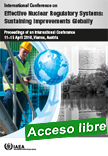 |
International Conference on Effective Nuclear Regulatory Systems: Sustaining Improvements Globally - Proceedings of an International Conference Held in Vienna, Austria, 11–15 April 2016
IAEA Proceedings Series, 2017, 40 p.
This publication is the proceedings of the fourth in a series of conferences convened by the IAEA on effective nuclear regulatory systems. The conference brought together senior regulators in the areas of nuclear and radiation safety as well as nuclear security from around the world to discuss how to improve regulatory effectiveness to ensure the protection of the public and the environment.
|
The conference built upon the conclusions and deliberations of the past to review issues that are important to the global nuclear regulatory community. These proceedings include the opening addresses, the session summaries, and the President’s summary and conclusions of the conference. The attached CD-ROM contains all the papers from the conference that were made available for publication.
Extraído de: http://www-pub.iaea.org/books/IAEABooks/11186/International-Conference-on-Effective-Nuclear-Regulatory-Systems-Sustaining-Improvements-Globally
|
 |
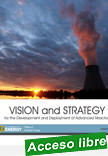 |
Vision and Strategy for the Development and Deployment of Advanced Reactors
Office of Nuclear Energy - U.S. Department of Energy, January, 2017, 30 p..
There has been increasing interest in advanced reactors, and for good reason. Advanced non-light water reactors can provide reliable, safe, clean energy as part of a mix with current technology nuclear, new large reactors and new small modular reactors. |
Multiple nuclear energy generating options will be needed as older plants are decommissioned and an expanded economy creates additional energy demand. This document provides a Vision and Strategy to support the development and deployment of advanced reactors as viable sources for future nuclear energy generation.
The U.S. Department of Energy (DOE), with stakeholder input, has developed a vision and goal for supporting the development and ultimate deployment of advanced reactor technology as part of a broader federal commitment to energy security, economic prosperity, and national security. The vision is that by 2050, advanced reactors will provide a significant and growing component of the nuclear energy mix both domestically and globally. In support, a goal has been established that by the early 2030s, at least two non-light water advanced reactor concepts will have reached technical maturity, demonstrated safety and economic benefits, and completed licensing reviews sufficient to allow construction to go forward.
To achieve this vision and goal, DOE’s strategy for accelerating the development and deployment of advanced reactors includes six strategic objectives: making DOE capabilities more accessible to support nuclear innovation through the Gateway for Accelerated Innovation in Nuclear (GAIN), reducing technical risks, developing fuel cycle options, supporting licensing approaches, maximizing the effectiveness of public and private sector investments and developing the workforce.
This document describes our vision and strategy for supporting the development and ultimate deployment of advanced nuclear reactor technology.
Extraído de: https://gain.inl.gov/Shared%20Documents/...Reactors.pdf
|
 |
|
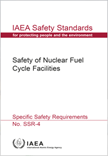
|
Safety of Nuclear Fuel Cycle Facilities - Specific Safety Requirements
IAEA Safety Standards Series, 2017, 135 p.
This Safety Requirements publication establishes a basis for safety and for safety assessment at all stages in the lifetime of nuclear fuel cycle facilities. A broad scope of requirements is established for site evaluation, design, construction, commissioning, operation and preparation for decommissioning that must be satisfied to ensure safety. These requirements apply to facilities for conversion, enrichment, nuclear fuel production, storage of fresh and spent fuels, reprocessing, preparation for disposal and associated research and development facilities.
|
Extraído de: http://www-pub.iaea.org/books/IAEABooks/12216/Safety-of-Nuclear-Fuel-Cycle-Facilities
|
 |
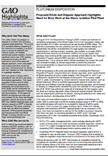 |
Plutonium Disposition: Proposed Dilute and Dispose Approach Highlights Need for More Work at the Waste Isolation Pilot Plant
Government Accountability Office (GAO - US), September 5, 2017, 76 p.
The United States has pledged to dispose of 34 metric tons of surplus, weapons-grade plutonium. The current U.S. approach relies on disposing of the plutonium by irradiating it as MOX fuel—a mixture of plutonium and uranium oxides—in modified commercial nuclear reactors.
|
Due to a significant rise in cost, DOE recently proposed terminating the MOX approach in favor of the dilute and dispose approach, which DOE stated may be less expensive. Under this approach, plutonium would be diluted with inert material and then disposed of in a geologic repository.
GAO was asked to review DOE’s planning for both the MOX and dilute and dispose approaches. This report examines: (1) the extent to which DOE’s revised cost estimates for completing the construction of the MOX facility and for completing the overall Plutonium Disposition Program met best practices, (2) the status of NNSA’s development of a life-cycle cost estimate for the dilute and dispose approach, and (3) the extent to which DOE has sufficient disposal space and statutory capacity at WIPP to dispose of all defense TRU waste, including waste from the dilute and dispose approach. GAO reviewed documents and interviewed DOE and NNSA officials, including officials from five major waste-generating sites.
Extraído de: http://www.gao.gov/assets/690/686929.pdf
Highlights: http://www.gao.gov/assets/690/686929.pdf
Report: http://www.gao.gov/products/GAO-17-390
|
 |
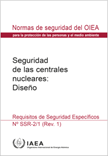 |
Seguridad de las centrales nucleares: Diseño
Colección de normas de seguridad del OIEA, 2017, 75 p.
En la presente publicación se establecen requisitos de diseño para las estructuras, los sistemas y los componentes de una central nuclear, así como para los procedimientos y los procesos organizativos importantes para la seguridad que deben cumplirse para la explotación segura de la central y para prevenir sucesos que puedan poner en peligro la seguridad, o para mitigar las consecuencias de esos sucesos, si llegaran a producirse.
|
Esta publicación está dirigida a las organizaciones que participan en el diseño, la fabricación, la construcción, la modificación, el mantenimiento, la explotación y la clausura de las centrales nucleares, en el análisis, la verificación y el examen, y en la prestación de apoyo técnico, así como a los órganos reguladores.
Extraído de:http://www-pub.iaea.org/books/IAEABooks/11054/Safety-of-Nuclear-Power-Plants-Design
|
 |
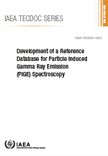 |
Development of a Reference Database for Particle Induced Gamma Ray Emission (PIGE) Spectroscopy
IAEA TECDOC, 2017, 244 p.
The IAEA coordinated research project (CRP) on ‘Development of a Reference Database for Particle-Induced Gamma-ray Emission (PIGE) spectroscopy was subsequently established in 2011 with the overall objective of producing updated and reliable nuclear data for PIGE analysis and making these data freely available to the user community.
|
|
|
|
| |
|
|
| |
| |
|
|
| |
| |
|
|
| |
| |
|
|
|
|
|
|
|
